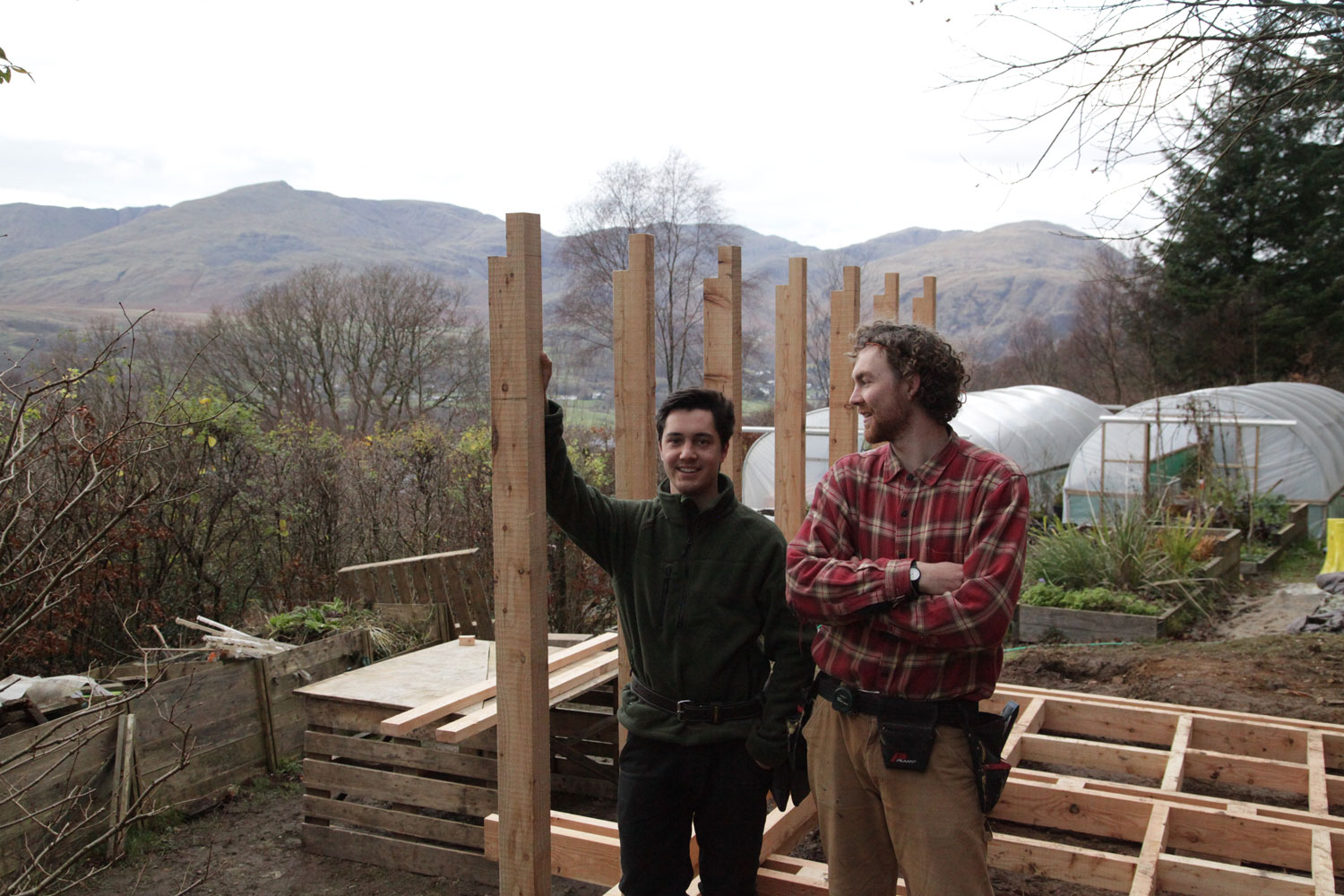Last month the Mayor of London announced the 26 community-led crowdfunding campaigns the city will be backing as part of the annual Crowdfund London programme. This year’s winners included three recent Central Saint Martins M ARCH: Architecture graduates. Neba Sere is part of the Build Up Hackney project, an initiative for young people in Hackney to take control of the changes happening in their local area, which was awarded £30,000.
Billy Adams and Freddie Wiltshire are part of The Farm Café project, which sets out to transform the outbuildings of Clitterhouse Farm in Barnet into a hub for the local community with an expanded café and new workshop spaces. The project was given a pledge of £50,000 – the highest award ever. We spoke to the duo about their roles in the project and the work they have been doing with the local community to realise it.
How did you initially get involved with the Clitterhouse Farm Café project?
The Farm Project had reached a stage where they were getting ambitious enough in their intent to warrant help from a designer or architect. They reached out to the Citizens Design Bureau, who forwarded their details to Spatial Practices Programme Director Mel Dodd. Mel told us about the project and we went to meet with them on site and got on straight away.
What has been your individual role within the project?
We have essentially been acting as the architects, coming up with proposals for the development of the farm site. But we have also been trying to situate ourselves in the project not just as architects, but as makers too. We find this is a more direct and accessible way to engage and interact with people involved.
How did the M ARCH course prepare you for this role?
The course has been great as it encouraged us to engage in live situations and go out there and do things in the real world. All the tutors have been really supportive of what we’re doing with the Clitterhouse Farm project. There were some points that we rushed into slightly naively and were we to approach them again, knowing what we know now, we would approach slightly differently.
I think this course especially, compared to other Architecture MAs in the country, prepare you for dealing with real situations. It is a big part of why we chose to study on it in the first place and a direction I think many other courses will and should follow.
What are the overarching aims of the project?
To provide a community facility that is welcoming to everyone and gives local people facilities that are otherwise difficult and distant to access.
What will the funding you’ve been awarded from Crowdfund London Awards allow you do?
At the moment we still need to raise a lot more money to reach our overall target for the crowdfund campaign. The £50,000 from the Mayor was a huge step and a big boost, but there is still more to raise. If we don’t reach our main aim of £105,000 we don’t get any of the money. If we do raise all the money though it will allow us to build the first stage of our proposal we developed as part of our final year project at CSM. This first stage is a new, larger café, three workshops in one of the old barns and very importantly a new toilet onsite (they have not yet had a permanent toilet onsite). The extra space and resource this would give the project would really allow them to expand what they do and how much they can offer. Being able to operate much more frequently and also generate an income from the café and workshop rental will allow the project to develop further going forward.
How are you working with the local community on the project?
We have been working closely with the people who set up and run the project, who are members of the local community – all of whom live within 5 minutes of the farm. We have also been working with the wider community through a series of hands-on workshops including furniture making and clay tile making. These workshops are intended to introduce ourselves to the local people who may use the site, as well as creating a more relaxed and informal environment to talk to people about the project. The usual “engagement” or “consultation” events are often dry and forced and can be very unconducive to a meaningful discussion about architecture, but we have found that through using making as a focus we can then have these discussions more casually during the workshops and consequently they are more relaxed and genuine. People also pick up some skills along the way.
How has the project impacted your practice?
It has been the foundation of our practice really. Without this project to collaborate on we may never have started working together. It has also allowed us to test ideas while still in education that may have been more difficult out of university. It has set us up to do what we are doing now and hope to do going forward, which is designing and making things with and for people.
More information:

